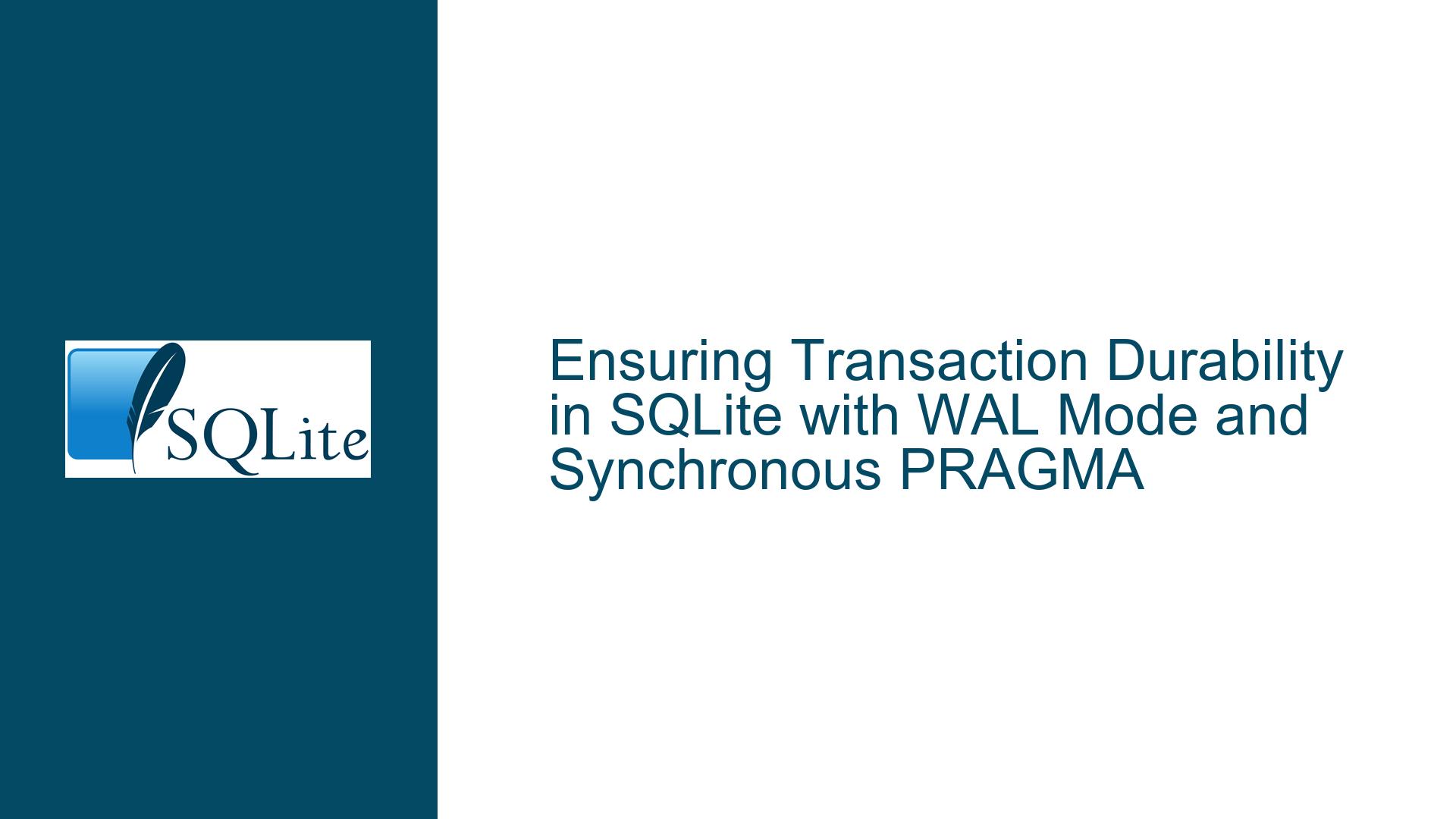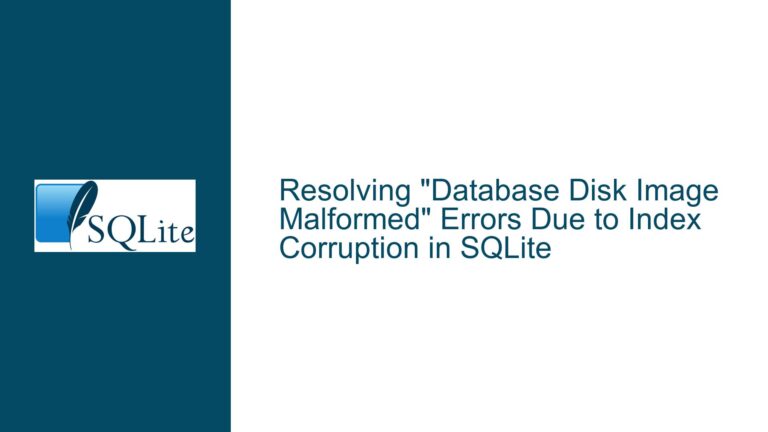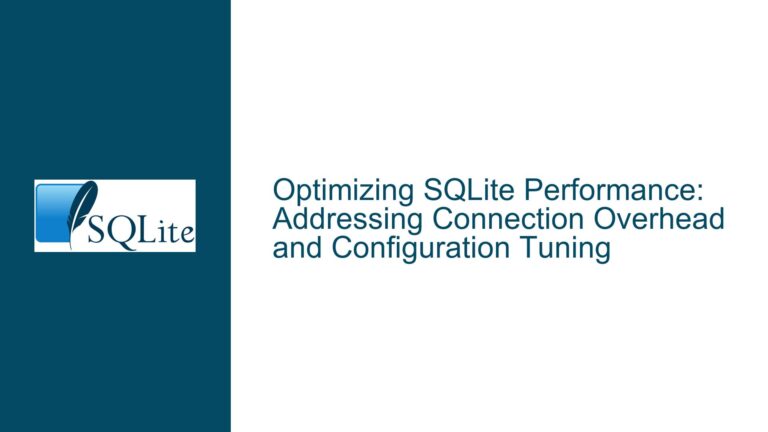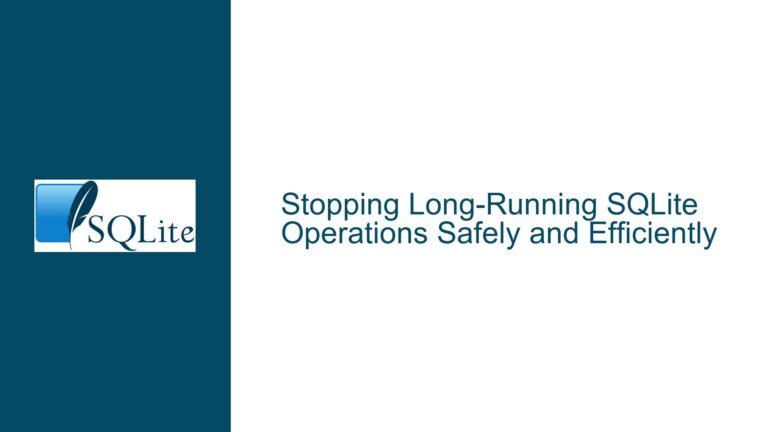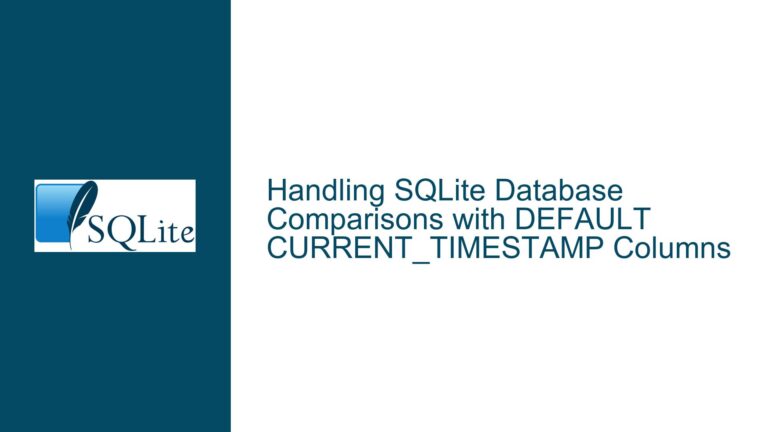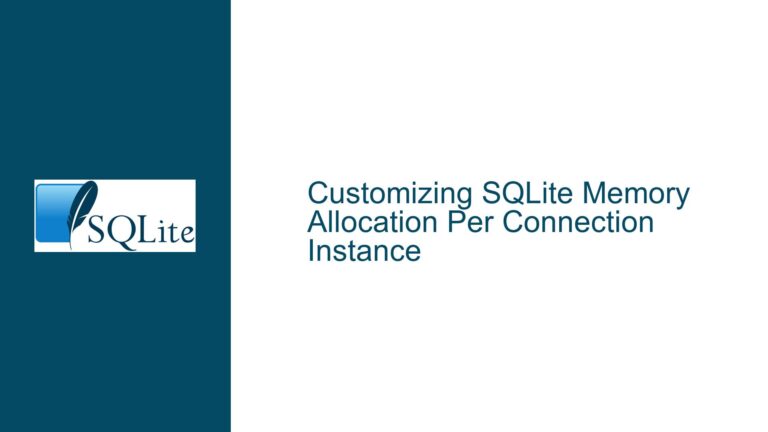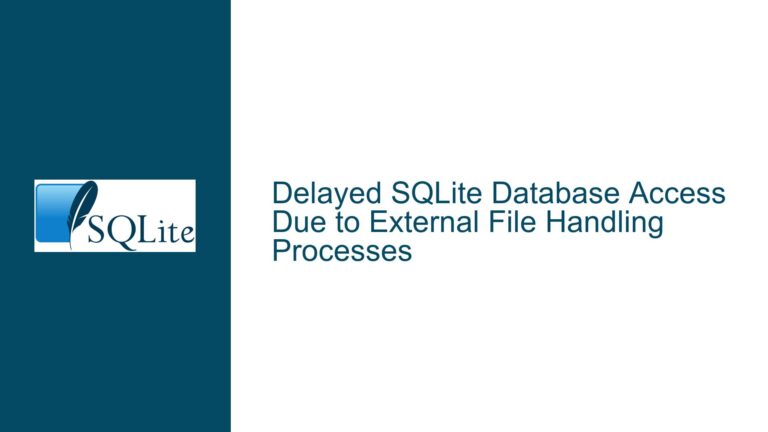Ensuring Transaction Durability in SQLite with WAL Mode and Synchronous PRAGMA
Understanding Transaction Durability in SQLite WAL Mode
Transaction durability is a critical aspect of database systems, ensuring that once a transaction is committed, its changes are permanently stored and will survive system crashes or power failures. In SQLite, durability is influenced by the Write-Ahead Logging (WAL) mode and the PRAGMA synchronous setting. WAL mode is a popular choice for improving concurrency, but it introduces nuances in how durability is achieved compared to the default rollback journal mode. The PRAGMA synchronous setting controls how aggressively SQLite flushes data to disk, with FULL being the most durable setting and NORMAL offering a balance between performance and durability.
In WAL mode, transactions are written to the WAL file before being applied to the main database file. This allows multiple readers and writers to operate concurrently without blocking each other. However, the durability of these transactions depends on whether the WAL file has been flushed to disk. By default, with PRAGMA synchronous=NORMAL, SQLite does not immediately flush the WAL file to disk after each transaction commit. This improves performance but leaves a window where committed transactions could be lost in the event of a crash.
To ensure durability, additional steps are required. One approach is to switch PRAGMA synchronous to FULL and commit a new transaction, which forces an fsync() on the WAL file. Another approach is to use sqlite3_wal_checkpoint_v2 with SQLITE_CHECKPOINT_FULL or higher, which ensures that the WAL file is synchronized with the main database file. Understanding these mechanisms is essential for developers who need to balance performance and durability in their applications.
Why Transactions May Not Be Durable in WAL Mode with PRAGMA Synchronous=NORMAL
The core issue arises from the behavior of SQLite in WAL mode when PRAGMA synchronous is set to NORMAL. In this configuration, SQLite does not immediately flush the WAL file to disk after a transaction commit. Instead, it relies on the operating system’s buffer cache to eventually write the changes to disk. This approach improves performance by reducing the number of expensive disk I/O operations, but it introduces a risk: if the system crashes or loses power before the WAL file is flushed, any committed transactions that were not yet written to disk will be lost.
This behavior is by design and is documented in the SQLite documentation. However, it can catch developers off guard, especially those who assume that a committed transaction is always durable. The issue is particularly relevant in applications where data integrity is critical, such as financial systems or applications handling sensitive user data. In these cases, developers need to take additional steps to ensure durability, even if it comes at the cost of some performance.
Another factor contributing to the issue is the interaction between multiple connections or processes accessing the same database. In WAL mode, multiple connections can read and write to the database concurrently, but the durability of transactions depends on the state of the WAL file, which is shared across all connections. If one connection commits a transaction with PRAGMA synchronous=NORMAL, another connection can force durability by setting PRAGMA synchronous=FULL and committing a transaction. However, this requires careful coordination and understanding of how SQLite handles the WAL file.
Ensuring Durability with PRAGMA Synchronous=FULL and WAL Checkpoints
To address the issue of transaction durability in WAL mode, developers can use two primary techniques: setting PRAGMA synchronous=FULL and performing a WAL checkpoint. Both methods ensure that the WAL file is flushed to disk, making all previously committed transactions durable.
Setting PRAGMA synchronous=FULL forces SQLite to perform an fsync() on the WAL file after each transaction commit. This ensures that the transaction is written to disk before the commit operation completes. However, this approach can significantly impact performance, especially in write-heavy applications. As an alternative, developers can temporarily switch PRAGMA synchronous to FULL and commit a new transaction. This forces an fsync() on the WAL file, making all prior transactions durable. Importantly, this does not require the new transaction to originate from the same connection or process as the original transaction.
Another approach is to use sqlite3_wal_checkpoint_v2 with SQLITE_CHECKPOINT_FULL or higher. A WAL checkpoint synchronizes the WAL file with the main database file, ensuring that all committed transactions are durable. This method is more efficient than setting PRAGMA synchronous=FULL because it only performs the fsync() operation once, rather than after every transaction commit. However, it requires careful handling of concurrent readers and writers, as a checkpoint may block other operations.
For developers looking for a more efficient solution, SQLite provides a way to flush the journal file directly. By using sqlite3_file_control to obtain the sqlite3_file* pointer for the journal file and calling the xSync method, developers can ensure that the journal file is flushed to disk. This approach has less overhead than a full checkpoint and can be used to achieve durability without impacting performance as significantly. However, it requires a deeper understanding of SQLite’s internal APIs and may not be suitable for all applications.
In conclusion, ensuring transaction durability in SQLite WAL mode requires a careful balance between performance and data integrity. By understanding the behavior of PRAGMA synchronous and the WAL checkpoint mechanism, developers can choose the most appropriate method for their application’s needs. Whether using PRAGMA synchronous=FULL, performing a WAL checkpoint, or flushing the journal file directly, the key is to ensure that the WAL file is synchronized with the disk before considering a transaction fully durable.
